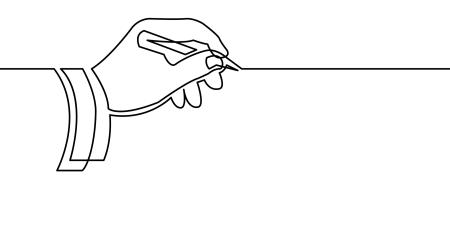The phase 3 clinical trial of a blood substitute called PolyHeme recently concluded, and its preliminary results boded a not-so-happy new year for developer Northfield Laboratories and its investors [1].
PolyHeme test subjects were individuals in hemorrhagic shock, to whom the oxygen-carrying blood substitute was administered in an ambulance and continued for 12 hours after arrival at a hospital [2]. Northfield CEO Steven Gould contends that the study data are susceptible to different interpretations, but it is not only the results that are controversial; many have criticized the trial design, claiming that certain stages violated federal regulations and were unethical [3].
Most of the scrutiny stems from the characteristics of the subject population—severely injured people who were incapable of consenting to or refusing the experimental treatment. The FDA allows for "waived consent" research under its provisions for protection of human subjects in 21 CFR sec. 50.24, but demands greater patient protections in such situations [4]. Its critics say that the PolyHeme trial, despite its FDA approval, was not in accordance with a plain reading of federal regulation of waived consent research because, once the patients-subjects reached the hospital, a standard and effective treatment—blood—was available but was not given to them. The Northfield case exposed ambiguity in interpretation of the FDA regulations that undermines the intent of that agency's narrow waiver of informed consent in specific types of research.
Informed consent is the cornerstone of clinical medicine. Under American and common law, each person "is considered to be master of his own body," and has the right to authorize or decline medical treatment [5]. Failure to obtain informed consent creates liability for medical battery, unless the treatment falls under the emergency care exception [6]. The emergency exception derives from two sources, the physician's ethical obligation to provide care in life-threatening situations and the assumption that the patient would have consented to the medical treatment in the interest of self-preservation had he been competent to do so [7].
There is a heightened standard of care in clinical research because of the potential and historic abuse of test subjects [8]. While the Nuremberg Code calls for voluntary consent in all human experimentation, the American Medical Association (AMA) Code of Medical Ethics and the Declaration of Helsinki recognize that advancement of medical knowledge sometimes requires research involving patients who cannot consent, for example, patients who are unconscious or incompetent [9,10]. Both documents require investigators to obtain consent from the subject or a surrogate as soon as possible. The AMA guidelines require that the experimental treatment "have a realistic probability of benefit equal to or greater than standard care," and that the risks of using the experimental treatment are "reasonable" compared to the risks associated with standard treatment [9]. The FDA regulations for waived consent research into new drugs or devices are an attempt to accommodate medical progress while respecting individual rights.
FDA regulations impose significantly greater obligations on researchers and institutional review boards (IRBs) than the AMA standards. The FDA endeavors to protect the rights of subjects by requiring investigators to consult with "representatives of the communities in which the clinical investigation will be conducted and from which the subjects will be drawn," and to disclose the experiment's risks and expected benefits [11]. In studies that have been granted the waiver of informed consent, test subjects must be in a life-threatening situation, available treatments must be unproven or unsatisfactory, the study must offer subjects a direct benefit for participating, and the risks and benefits of receiving the experimental treatment must outweigh those of receiving the standard care [12].
The FDA elaborated on its regulations in a 1998 information sheet explaining that an available treatment is considered "unproven or unsatisfactory" when clinical equipoise exists, that is, when "the relative benefits and risks of the proposed intervention, as compared to standard therapy, are unknown, or thought to be equivalent or better" [13]. The ethical principle of clinical equipoise underlies all medical research and obligates researchers to provide standard treatment unless there is uncertainty about the relative effectiveness of the standard and experimental treatments [14].
Based on the FDA's interpretation of its regulations, the PolyHeme trial would be permissible if there were uncertainty about the superiority of the standard treatments at both the ambulance and hospital stages. There is little controversy about using PolyHeme in the field or in an ambulance because its oxygen-carrying capacity offers a benefit that saline solution, the current treatment, does not. When a patient arrives at a hospital, however, blood is available and is generally regarded as an acceptable treatment for severe blood loss [15]. According to 21 CFR sec. 50.24(a)(1), if blood is proven and satisfactory, then patients should receive blood and not experimental treatment.
The FDA's construction of "unsatisfactory or unproven" as "maybe or maybe not inferior to an experimental treatment" expands the number of drugs and devices that may be tested without the patients' consent. Even though blood is an effective treatment in 75 percent of cases [16], Northfield contends that blood is not satisfactory in some cases and that PolyHeme may be more effective. One commentator agreed, citing a correlation between blood transfusion and multiple organ failure [17]. Others dispute the claim of a causal relationship between blood transfusion and multiple organ failure and argue that PolyHeme is not comparable because it lacks other characteristics of blood, such as clotting factors [3]. This difference of professional opinion may satisfy the FDA's clinical equipoise standard, but the widespread acceptance and success rate of blood transfusion does not fit comfortably with the formal rule that permits "waived-consent" experimental treatment when available treatments are "unsatisfactory."
Despite its high success rate, blood is not a perfect treatment for severe blood loss. In advocating for medical progress, the Declaration of Helsinki says that "[e]ven the best proven prophylactic, diagnostic, and therapeutic methods must continuously be challenged through research for their effectiveness, efficiency, accessibility and quality" [18]. PolyHeme, which has a longer storage life and is less likely to trigger immunologic complications because it does not require blood-type matching, represents such a challenge.
If 21 CFR sec. 50.24 is read to permit experimentation without the consent of the test subjects for any drug or device that can be improved, then the requirement that existing treatments be "unproven or unsatisfactory" is hollow, and individual permission is unnecessary provided there are exigent circumstances and the community is aware of the experiment [19]. If PolyHeme is at least as safe as blood and prior research has demonstrated its potential superiority, then the trial operated within the ambit of federal guidance for waived consent emergency research, but not within a reasonable interpretation of the wording of the regulation.
On the other hand, exceptions to laws and ethical standards of conduct should be read as narrowly as possible to avoid encroachment on the rights and safety of individuals, especially those as vulnerable as accident victims suffering from severe blood loss. The FDA's permissive 1998 guidance increases the vagueness of 21 CFR sec. 50.24, with the result that an imprecise definition of "unsatisfactory" is interpreted to allow experimentation without consent in situations where proven and reliable treatments are available.
References
-
Northfield's stock price dropped more than 50 percent after the announcement of the results. See Japsen B. Blood substitute "a disaster" in trial. Chicago Tribune. December 20, 2006.
-
Northfield Laboratories. Questions and answers. PolyHeme trauma trial. FAQ. Accessed January 17, 2007.
- Kipnis K, King NMP, Nelson RM. An open letter to IRBs considering Northfield Laboratories' PolyHeme Trial. Am J Bioeth. 2006;6(3):18-21.
-
Exception from informed consent requirement for emergency research. 21 CFR sec. 50.24(a)(1)-(4).
-
Cruzan v Director, Missouri Dept of Health, 497 US 261, 305 (1990).
-
Pratt v Davis, 79 NE 562, 564 (Ill 1906); Lane v Anderson, 802 NE 2d 1278 (Ill App. 2004).
-
In re Estate of Allen, 365 Ill App 3d 378, 386 (Ill App 2nd Dist 2006). This decision held that the emergency exception does not apply if the physician has reason to believe that the patient would decline the treatment; Restatement 2d of Torts, sec. 892D, "Emergency Action Without Consent." Available at: http://www.state.il.us/court/opinions/AppellateCourt/2006/2ndDistrict/May/Html/2041205.htm. Accessed January 17, 2007.
- Fost N. Waived consent for emergency research. Am J Law Med. 1998;24(2-3):163-183.
-
Opinion 8.085 Waiver of Informed Consent for Research in Emergency Situations. American Medical Association. Code of Medical Ethics 2008-2009 Edition. Chicago, IL: American Medical Association; 2008:255-256.
-
Declaration of Helsinki, paragraph 26. Accessed January 17, 2007.
-
Exception from informed consent requirement for emergency research. 21 CFR sec. 50.24(a)(7)(i)-(iii).
-
Exception from informed consent requirement for emergency research. 21 CFR sec.50.24(a)(3).
-
Food and Drug Administration. 1998 Update: Exception from informed consent for studies conducted in emergency settings: regulatory language and excerpts from preamble. Guidance for Institutional Review Boards and Clinical Investigators. Available at: http://www.fda.gov/oc/ohrt/irbs/except.html.
- Miller P, Weijer C. Fiduciary obligation in clinical research. J Law Med Ethics. 2006;34(2):424-440.
- Spellecy R. Unproven or unsatisfactory versus equipoise in emergency research with waived consent. Am J Bioeth. 2006;6(3):44-45.
- Derse A. Emergency research and consent: keeping the exception from undermining the rule. Am J Bioeth. 2006;6(3):36-37.
-
Dougherty AH. In defense of the PolyHeme trial (letter to the editor). Am J Bioeth. 2006;6:W35.
-
Declaration of Helsinki. Accessed January 17, 2007.
-
For a description of the problems with community consent, see Holloway KFC. Accidental communities: race, emergency medicine, and the problem of PolyHeme. Am J Bioeth. 2006;6(3):1-11; and Goodman L. Nonconsensual science. J Clin Invest. 2004;114:144-145.



